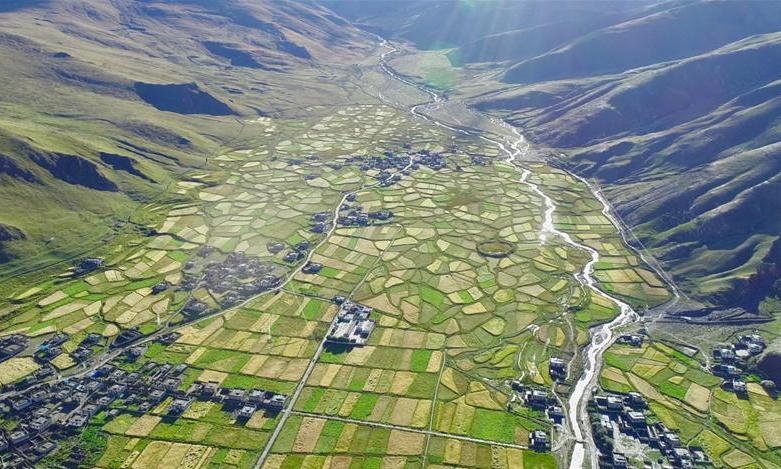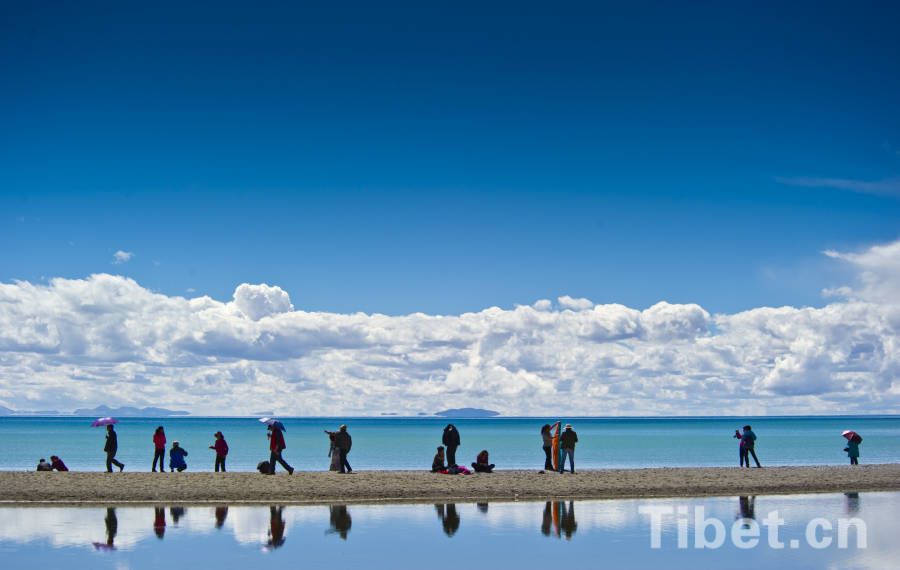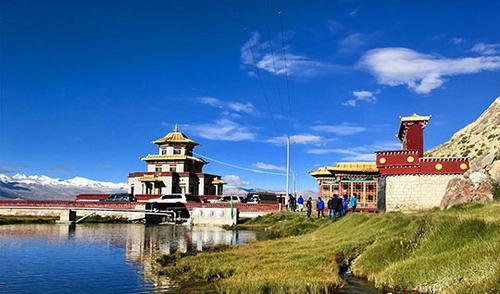The long road home has become shorter and shorter
For Spring Festival 2018, my parents changed their normal routine of previous years and on a whim, decided to return to our hometown to spend the New Year.
My hometown is thousands of kilometers away in Gansu province, northwest China, but it’s only a two hours flight from Lhasa to the provincial capital Lanzhou.
At noon, we took the airport bus from Lhasa City to the airport. The whole journey was on the expressway and took almost 40 minutes. On the bus, my father exclaimed, “It’s really easy to go home now. It was really difficult when we first came to Tibet; the road condition was really bad! ”
The long and difficult road home between Lhasa and Lanzhou filled my parents with memories. Just after the New Year in 1983, when the snow in his hometown had not completely melted away, my father responded to the call of the nation and went thousands of kilometers away to join the ranks of building China’s frontier in Tibet.
From his hometown in Gansu to the plateau, he had to first take a car from Lanzhou to Golmud, passing the magnificent Qinghai Lake and Gobi Desert along the way. Arriving in Golmud a few days later, he then had to catch a ride on one of the big trucks that come into Tibet. In addition to climbing over snowy mountains several kilometers above sea level, they had to worry about the danger of sliding wheels the entire way. Not only did they undergo the varying seasons, they also had to deal with symptoms of altitude sickness, such as headaches and nausea. This road into Tibet, called the “Sky Road”, took several days due to its poor condition in those days.
On July 1, 2006, when I had just graduated from middle school, the Qinghai-Tibet Railway opened for passengers. My parents bought train tickets and took me to their hometown. Lhasa Railway Station, filled with Tibetan characteristics, was a blend of classic and modern styles inside and out. The interior decorations of the train were also in Tibetan style, and they provided oxygen cylinders for passengers. I wasn’t the only one who was enthralled; my parents were also excited by the journey. The scenery of the plateau along the way was amazing. What was even more amazing were the great feats that the Chinese people achieved on this frozen earth.
In the years that followed, I became more and more aware of the changes brought about by better road transportation. The “Sky Road” that had poor conditions dozens of years ago has since become the best choice for travel enthusiasts to enter Tibet thanks to careful maintenance by road workers. Every summer, the line of vehicles on the Qinghai-Tibet Highway is endless as people are choosing to experience the beautiful scenery of the plateau and drive into Tibet. There are also many tourists who take the train to Tibet humming the melody to “Taking the Train to Lhasa”.
My parents and I have all made the journey from Tibet to our hometown. We all feel that the distance between Tibet and our hometown has become shorter and shorter during the 40 years since Reform and Opening up.
Editor:Yanina
Your Comment
Name E-mailRelated News
-
-

-
Tibet holds second Tsampa Toursim and Culture Festival
Tsampa, the traditional staple food of the Tibetan people, comes from the highland barley crop, which is a unique crop on the Qinghai-Tibet Plateau, and serves as the main provisions.
-
-
-

-
Courts in Tibet use new technologies to better serve farmers, herders
Courts in southwest China's Tibet Autonomous Region have started using new technologies such as voice recognition and big data to offer better services for people living in remote areas.
-
-
-

-
Why November and December are the Best Months to Travel to Tibet?
Tibet is considered the highest region on earth. Traveling to this location rewards even the most hardened travelers with amazing sights.
-
-
-

-
Caterpillar fungi promoted at Lhasa's first cordyceps sinensis trade fair
Exhibitors promote caterpillar fungi at Lhasa's first cordyceps sinensis trade fair on Oct. 4, 2018.
-
-
-

-
Norbu Tenzin, Tibet's master of tsampa
In Xigaze, the hometown of highland barley in southern Tibet, southwest China, Norbu Tenzin has been widely known as the master of tsampa.
-






